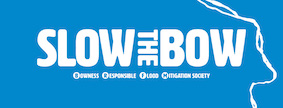The experts say that barriers in Bowness are not desirable without a new Bow reservoir.
Based on the reports prepared for the City of Calgary, BRFM has concluded that the most effective solutions to flood protection, for both public safety and property protection are located upstream of the City. It is logical to solve the flood issue before waters enter the City. The Flood Mitigation Options Assessment, completed for the City by IBI Group and Golder Associates Ltd. in 2016 also states
“if a new Bow Reservoir is not built, fortification of the Bow River by barriers is not desirable, as it would require higher barrier with large footprints along the length of the Bow River within Calgary, resulting in dramatic impacts on the community”
The Permanent Flood Barriers Assessment, completed for the City by Associated Engineering (AE) in April 2018 gives credence to the belief that the real solution is upstream. AE evaluated the scenario where the river level flowing at a rate of 1230 m3/s with the proposed berm design and average permeability of the strata below the berm. In this scenario very few homes avoid any flooding. More information on the effects of groundwater can be found in the “The Berm Won’t Work” section of this website.

The real solution lies upstream
So what can be done to stop flooding from the Bow River in Calgary? The real solutions are upstream; we need additional reservoir storage capacity on the Bow River upstream of Calgary and a continuation of the TransAlta Modified Operating Agreement (the TA agreement).
In 2016, the Government of Alberta (GoA) negotiated a 5 year agreement with TransAlta to set elevations on the Ghost reservoir during the highest storm risk period of the year (typically mid May to early July). The agreement was extended for another 5 year period, to expire on April 1, 2026. By keeping the reservoir lower there is more water storage capacity thereby lowering or delaying peak flow rates downstream of the dam. These controls could amount to upwards of 20% of the peak flow rate of 1780 m3/s that was observed in 2013, representing a considerable reduction of flood risk for all communities downstream of the Ghost Dam, including Bowness.
More information can be found by reading the Bow River TransAlta agreement fact sheet found on the GoA website: https://open.alberta.ca/publications/bow-river-transalta-agreement-fact-sheet.
More than the modified TA agreement is needed to protect against a flood event of the magnitude of the one experienced in 2013. It has been widely acknowledged by various experts that to fully attenuate against an event similar to that of 2013, a reservoir on the Bow River with the capacity to hold the volume of three Ghost Reservoirs is required.
In May 2017, the Bow River Working Group (BRWG) submitted its “Advice to Government” to the Minister of Alberta Environment & Parks (AEP). One of their recommendations was for further study of three flood and drought mitigation schemes on the Bow River:
- New Glenbow reservoir
- New Morley reservoir
- Expanded Ghost reservoir.
In May 2018, the GoA followed through on the BRWG’s recommendation and committed to fund further study of the Bow Basin Water Management Options.
What’s happening now with the Bow Basin Water Management Options study?
In November 2019, GoA awarded a contract to Wood Canada Limited (Wood) to conduct the conceptual assessment (phase 1) of these three schemes (Glenbow, Morley, Expanded Ghost) for flood and drought mitigation. Potential selection and implementation of a reservoir option on the Bow River will occur in four phases from assessment through to construction. Details about the project (renamed to the Bow River Reservoir Options study or BRRO) are available on the BRRO website.

